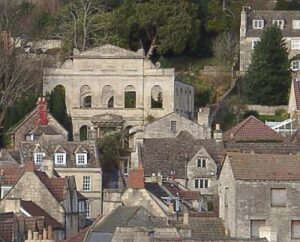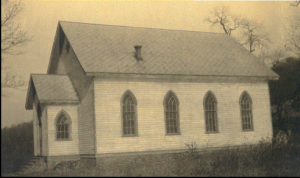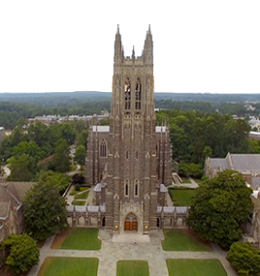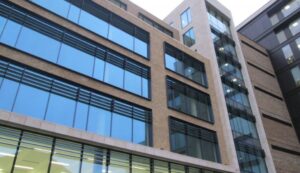by
Larry Pearce
11/02/20
(Click on imagine to enlarge/Hit back arrow to return)
Definition: In English church history, a Nonconformist was a Protestant who did not “conform” to the governance and usages of the established Church of England. The term specifically included the Reformed Christians (Presbyterians, Congregationalists and other Calvinist sects), plus the Baptists and Methodists. The English Dissenters such as the Puritans were retrospectively labelled as Nonconformists.
By law and social custom, Nonconformists were restricted from many spheres of public life—not least, from access to public office, civil service careers, or degrees at university—and were referred to as suffering from civil disabilities.
My Pearce family first came to American two-hundred years ago this year and brought their strong Methodist faith with them, I am told. I have written extensively about our “Original Family Narrative” and my ancestors’ adventures in the new world. (See partial list of articles below.) They came to Western Pennsylvania relatively late compared to my wife’s Swiss-Germans and my mother’s Scots-Irish, both probably at least 250 to 300 years ago. Most of Susan’s Anabaptist forebearers came to the New World to escape religious persecution. Many stayed in the mountains east of Pittsburgh after migrating from Eastern Pennsylvania, some saying the hilly terrain reminded them of their native Switzerland, but we know that it was probably more because that by the late 18th century and the treaty of Ft. Stanwix, rich farmland in Somerset County was readily available. Westmoreland, Indiana, and Allegheny Counties, to name a few, had been mostly taken up after the earlier French and Indian War by the English and Scots-Irish.
Why did my Pearce’s come to the New World? In publication right now is an article investigating just that, a celebration of our bicentennial in America. Speculation includes everything from economic reasons, perhaps stemming from the great world recession of the late 1810s which seemed to originate from a natural disaster, to youthful exuberance and search for adventure, possibly on information from friends and family members who had come before. Unlike Susan’s ancestors, it doesn’t seem that religious persecution was a motivator to them. My mother’s Grays, Campbells and all were Presbyterians, followers of Scottish reformer John Knox (1554-1555), also considered a dissenter in the UK. These families had not been directly persecuted when they came to Western Pennsylvania. My Pearces had probably been faithful Church of England (Anglican Episcopal) devotees until Christian evangelical reformers like John Wesley (1703-1791) came along. This piece is about my Pearce ancestors of Wiltshire, southern England, and the influence Wesley had on them, a remarkable, if only coincidental, connection perhaps.
John Wesley’s father, Samuel, a local “priest” as Anglican ministers were called, had been labeled a “Nonconformist,” or dissenter from the Church of England. John graduated fro Oxford in 1724. Becoming a church deacon the following year, he assisted in his father’s ministry until being ordained in 1728. The next year he moved back to Oxford to fulfill fellowship requirements by tutoring and joined his younger brother Charles (1707-1788), who was a student there and later famous in his own right as organist and composer of some 6,500 hymns. They and other “rebellious” students and clergy formed a religious study group that became derisively known as the “Holy Club,” or “Methodists” because of their emphasis on methodical Bible study and devotion. With regular communion services and fasting several days a week, they were often mocked. Their missions included visiting and ministering to the prisoners at the local prison. They held to St. James’ simple prescription that “Faith without works is dead” (James 2:14).
John Wesley sailed to American in 1735, feeling a call from an area that is now Georgia. His mission included the Natives. He returned to England just three years later, considering his ministry unsuccessful. In his travels over the sea he encountered a group of German Moravians, and was deeply impressed by their simple devotion. Back in London, while attending a religious service on May 24, 1738, he had what we Evangelical Christians would call “a visit from the Holy Spirit.” Hearing from the writings of Protestant reformer Martin Luther, his introduction to the book of Romans, Wesley says, “I felt my heart strangely warmed.” This became known as the Aldersgate Experience, after the street where the meeting was held. He later recorded his feelings in his Journal, and this was the beginning of a new zeal in his preaching. 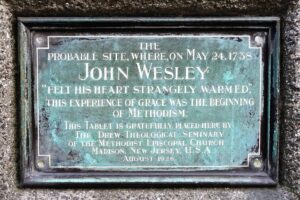 From Bristol, where he moved in 1739, Wesley traveled to many parts of England, often on horseback: Scotland, Wales, and Ireland, evangelizing but never intending to form a church separate from the official Anglican. He recorded his many experiences in his famous Journal. Despite great objections from the Church of England, his followers began to form their own organizations. Surely this exert from the Sunday School Times captures the heart of John Wesley:
From Bristol, where he moved in 1739, Wesley traveled to many parts of England, often on horseback: Scotland, Wales, and Ireland, evangelizing but never intending to form a church separate from the official Anglican. He recorded his many experiences in his famous Journal. Despite great objections from the Church of England, his followers began to form their own organizations. Surely this exert from the Sunday School Times captures the heart of John Wesley:
With a more than ordinary longing for the sweets and comforts of human love, he rose above disappointments which would have crushed ordinary men, forgot his “inwardly-bleeding heart” and gave himself unreservedly to the work of binding up the broken-hearted. Visiting the beautiful grounds of as English nobleman, he said, “I too have a relish for these things. but there is another world.”
When Wesley returned home to Bristol, he would often pass through the northern Wiltshire town of Bradford-on-Avon. Of course, my Pearce family ancestors were living in Bromham and other villages, just to the south. It was in Bradford-on-Avon that one of the first organized Methodist churches, called a chapel, was formed and a sanctuary built in 1756. A family namesake, Richard Pearce, had bought and renovated the Maidenhead Inn there and converted its malthouse (read “bar”) into a church. How’s that for irony? Bradford-on-Avon became a hotbed for Methodism in the years to follow.
My Great-great grandfather Richard (1786-1861) was a “miller by trade,” but it was this other Richard Pearce, an innkeeper in Bradford-on-Avon with whom Wesley stayed from time to time, that possibly saved his life in 1752 after he became quite ill. According to the Journal:
I had not been ill above a day or two before that pattern of practical Christianity, Mr. Richard Pearce, came to see me. Among other things he asked what money I had, I said but little. He then encouraged me not to fear, telling me that as I was far from my own country, he would take care I had all things necessary. Accordingly, he sent me one of the best nurses in the town. He next sent the chief apothecary the place afforded; and lastly Dr. Clark, the most experienced physician in all that country. Mr. Pearce refused to accept a single penny for all his kindness and expense.
Wesley’s Journal contains other references to whom he affectionately calls, “Brother Pearce.” The following autumn John Wesley asked Richard to go to Cornwall as a traveling preacher and he gladly accepted the call. There’s much more to this particular story, and it’s worth the wading through the Journal to read it and other tales. By the way, in the recordings of wills for Bradford-on-Avon, 1796, that Richard Pearce is listed along with a Dr. Joseph Pearce, surgeon. Somewhat later, Joseph Chaning Pearce (1811-1847), the son of a Dr. James Pearce, became known for holding the largest fossil collection in the country. My earlier article, “New Information on the Pearces of Old England,” gives some detailed history of our family. Wiltshire has been quite the agricultural area, going back before Roman times, with plenty of both grist and woolen mills. Today, a search of the internet will reveal the website of Pearce Seeds in Dorset.
One of the best descriptions of the “Great Evangelist” comes from an article in Sunday School Times entitled, “There to Another World”:
John Wesley, a classical scholar and gifted with a virile mind, gave himself fully to God and consecrated all his powers to His service. Possessed of a scholar’s love for book, yet his spent the most of his life in the saddle and in the active duties of a most strenuous life. With a passionate love for art, especially for music and architecture, he turned away from their charms to blow the gospel trumpet with all his might.
Wesley’s famous and revealing journal mentions other Pearces several times and in kindly ways. Under the heading, “Extraordinary Coincidence” (p. 145 online .pdf, p. 131 actual) dated Saturday 13, he writes:
I preached once more at St. Just, on the first stone of their new society house.
In the evening, as we rode to Camborne, John Pearce, of Redruth, was mentioning a remarkable incident: While he lived at Helstone, as their class was meeting one evening, one of them cried with an uncommon tone, “We will not stay here: we will go to —,” a house, which was in a quite different part of the town. They all rose immediately and went, though neither they nor she knew why. Presently, after they were gone, a spark fell into a barrel of gunpowder, which was in the next room, and blew up the house. So did God preserve those who trusted in Him and prevent the blasphemy of the multitude. The area that Wesley talks about, and which he visits frequently, 33 times to be exact, is located on the Cornwall Peninsula, not far from the our Pearce’s Wiltshire. More about John and his equally famous and gifted brother Charles in this area of England is outlined in John Pearce’s (a later namesake) 1964 book, The Wesleys in Cornwall. John often stay in the hamlet of Trewint and the home of the Isbell family, now a museum of Wesley and Methodism.
The area that Wesley talks about, and which he visits frequently, 33 times to be exact, is located on the Cornwall Peninsula, not far from the our Pearce’s Wiltshire. More about John and his equally famous and gifted brother Charles in this area of England is outlined in John Pearce’s (a later namesake) 1964 book, The Wesleys in Cornwall. John often stay in the hamlet of Trewint and the home of the Isbell family, now a museum of Wesley and Methodism. 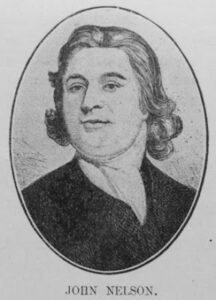 Editor Pearce also includes excerpts from the journal of another preacher, John Nelson (1707-1774), in this book. He was another layman recruited by Wesley to lay the groundwork for the Great Evangelist’s visits to certain areas. He later preached on his own and recounts this episode of an unfriendly encounter after giving a sermon:
Editor Pearce also includes excerpts from the journal of another preacher, John Nelson (1707-1774), in this book. He was another layman recruited by Wesley to lay the groundwork for the Great Evangelist’s visits to certain areas. He later preached on his own and recounts this episode of an unfriendly encounter after giving a sermon:
‘…. as I was going away, a piece of a brick struck me on the back of my head, and I fell flat on my face, and must have lain for some time, had not two men lifted me up; but I could not stand for some time. The blood ran down my back quite into my shoes; and the mob followed me through the city, swearing they would kill me when they got me out of it.’
So, non-conforming, itinerant preaching could be downright dangerous. A blog entitled Welldigger outlines the fascinating adventures of other evangelists who visited southern England in those days. By the way, Nelson is another of our family names, but we’ll save that research for another time.
When my Pearces first came to northern Allegheny County, PA, there were few Methodist congregations and church buildings, especially in what would be considered the wilderness frontier of Pine Township. They joined their Scotch-Irish neighbors and worshiped at Cross Roads Presbyterian, a young congregation first served by itinerant preachers from Pittsburgh. My Grandfather Wesley Herron Pearce’s (1876-1955) middle name paid tribute to the Rev. Francis Herron (1774-1860), of First Presbyterian, who often rode out to preach at Cross Roads.
It wasn’t long before the Pearce, English, and other local Wesleyan families met to worship and study the Bible in each others homes. Soon money was raised and volunteers were gathered to build their own Methodist church, which they called “Salem,” derived from the Hebrew for “peace.” Salem Methodist was relocated to the nearby town of Wexford when the railroad to Erie was constructed. Watch a YouTube presentation about the history of our church, which includes a reference to the Pearces.
My wife and I raised our children in the Jennerstown United Methodist Church, Somerset County, PA, because that’s where Susan’s parents went after a mild dispute over a merger of local Lutheran churches. It was close by, and many of our friends and neighbors also went there. In the kids’ teenage years we moved our membership to the more distant Presbyterian and subsequently Lutheran churches in Johnstown. There were more diverse opportunities for young people there, but probably the main reason was to satisfy Susan and my desire to serve God through our music, she as a singer and me as a organist. A complete personal history may be found in the series “Christianity Comes Home.” After the kids were gone, we moved our membership back to the Jennerstown church. I had not known about my Pearce family’s historical association with John Wesley’s Methodist movement until some years later. I was researching for a graduate paper on my favorite British poet, William Blake (1757-1827), when I stumbled upon the Journal of John Wesley. and his mention of men surnamed Pearce. Later, as I began my family history hobby, I traced my Pearce origins to Wiltshire in Southwest England, a hotbed of 18th century Methodism.
My Great-great grandparents Richard and Susan had been joined in matrimony in 1813 in London in what was called, “The Queen’s Church,” a Church of England congregation popular with the royals. Charles Wesley had been the organist there years earlier. The irony is that though Richard was from a Methodist tradition, he married into an Austen family line of English Baptist elders and preachers, also non-conformists. The Queen’s Church must have seemed to be a foreign environment. Great-great grandfather Richard Pearce’s family, like John and his father Samuel Wesley, probably had to regularly sign a document to the effect that they were at odds with the Church of England. This surely seems strange today in our land of religious freedom.
Besides being an ordained priest in the Anglican church, an itinerant preacher who inspired Methodism, a lover of music, and scholar, John Wesley was also a “medicine man” and author. Few people know this, but he wrote a treatise entitled John Wesley’s Primitive Physick, published in London in 1774. Whether the Pearces subscribed to his manual of healthy living, we don’t know, but much of the advice contained in it makes good sense today. Taking a preventative approach, the book contains more than 800 general prescriptions for more than 300 different disorders. These are just a few:
*Eat only enough as sits light and easy on the stomach.
*Anything pickled, smoked, highly seasoned, or salted is unwholesome.
*Water is the wholesomest of all drinks, quickening the appetite and strengthening digestion.
*Strong, spiritous liquors are a certain poison.
*Coffee and tea are extremely hurtful to persons who have weak nerves.
*Walking is the best exercise for those who are able to bear it; riding (horses) for those who are not.
*They should frequently shave and wash their feet.
*Those who read or write much should learn to do it standing.
He continues with specific remedies of ailments such as asthma, a cough, obesity, headache, obstructed bowel (“Hold a live puppy constantly on the belly”), and even a cure for one struck by lightening (“Dip them immediately in a pool of cold water.”) You may want to purchase a copy of this book to give to a loved one.
As you may have guessed, John Wesley would be considered today a social activist, and his advice would fit our day and times exactly. In 1772, at age 69, he wrote a letter to the editor of Lloyd’s Evening Post proposing a solution to the high unemployment that plagued England. After giving gruesome examples of poverty he first lists some of the causes, including the wasteful use of grain to make alcohol, wealthy people who need horses for sport, corporate farms specializing in one product, and finally, national debt despite high taxes. Sound familiar? His solution might be today right out of an extremist’s playbook:
-
- Repress “luxury, either by example, laws, or both.”
- Prohibit the distillation of alcohol.
- Tax luxury items such as horses and carriages.
- Reduce national debt.
Seems to me, some of these ideas make sense. Several ministries and movements have been inspired by the theology and work of John Wesley, although neither of the ones we mention here are officially part of the Methodist movement. The Salvation Army is considered to be both a Christian church and an international charitable organization with over 1.7 million “Salvationists,” as they call themselves. The Army began in an East London mission by Methodist minister the Rev. William Booth and his wife Claire to meet the physical and spiritual need of the poor, destitute, and hungry. Today, the Army is found in 131 countries with charity shops, shelters, and a disaster relief arm. Aside from their seasonal Red Kettle drive, they are usually one of the first on scene at tragedies of all sorts. Regular humanitarian aid is also given to developing countries.
Several ministries and movements have been inspired by the theology and work of John Wesley, although neither of the ones we mention here are officially part of the Methodist movement. The Salvation Army is considered to be both a Christian church and an international charitable organization with over 1.7 million “Salvationists,” as they call themselves. The Army began in an East London mission by Methodist minister the Rev. William Booth and his wife Claire to meet the physical and spiritual need of the poor, destitute, and hungry. Today, the Army is found in 131 countries with charity shops, shelters, and a disaster relief arm. Aside from their seasonal Red Kettle drive, they are usually one of the first on scene at tragedies of all sorts. Regular humanitarian aid is also given to developing countries.
Goodwill Industries International is today an American non-profit organization whose motto is “People, Planet, and Performance.” Their large number of retail stores take in used items from communities, after which their workers, mostly with employment challenges, sort and fix these items for resale, the money from which funds the operation, a beneficial circle of good. This all began in 1902 by the Rev. Edgar J. Helms of the Methodist chapel in Boston. Today the stores realize annual revenue in excess of $4.8 billion and provide work and training for over 300,000 people. Both organizations are quite visible in my area, doing the good for mankind that John Wesley would approve of. Though most people don’t know the connection between these organizations and the Great Evangelist, this Pearce family tries to keep the tradition alive by supporting and patronizing the Army and Goodwill.
Three other kinds of institutions in America have drawn spiritual, organizational, and certainly financial help and inspiration from the Wesleyan philosophy: hospitals; nursing homes and retirement communities; and colleges and universities. At least ten major hospitals bear the Methodist name across the country. Dozens of smaller health care facilities are owned by these umbrella organizations. Often close by in the same area are a variety of Methodist senior living centers, ranging from independent housing to personal care to skilled health care. My wife’s father spent several years in our Arbutus Park Retirement Community before his passing. Certainly relatable to readers here of every age are many of the over 100 colleges, universities, and seminaries connected to the Methodist movement. I’m sure you’re familiar with Boston University and Duke University. Each has a seminary associated with the school. In fact, I have a young cousin attending Duke in preparation for the ministry. Click on the “Preachers” link below.
John Wesley seemed to summarize the Christian doctrine of salvation and his ministry of doing good in a truly uplifting quote from his Journal:
I am content with whatever entertainment I meet with. That must be the spirit with all who take journeys with me. If a dinner ill-dressed, a hard bed, a poor room, a shower of rain, or a dirty road will put them out of humor, it lays a burden upon me greater than all the rest put together. By the grace of God I never fret. I repine at nothing. I am discontented with nothing. And to have persons at my ear fretting and murmuring at everything is like tearing the flesh off my bones.
Methodists and followers of John Wesley number in the millions around the globe today. Many find leadership in the World Methodist Council, whose church membership had numbered 40 million as of 2016. Non-member communicants were over 51 million, but non-WMC member churches with a Wesleyan/Methodist heritage could not be included due to the inability to independently verify data sources.
Finally, it seems the descendants of the Pearces of Wiltshire have come a long way, both literally and figuratively, and not always as pertains to milling and religion. For example, I found a link to Pearce Road in the town with the unusual name of Maidenhead, Berkshire, that sits between Wiltshire and London off the M4 along the River Thames. (This is not to be confused with Richard Pearce’s Maidenhead Inn that was converted to a Methodist chapel back in Bradford-on-Avon, but perhaps there is a connection yet to be discovered.) Maybe the most famous modern construction in the town of Maidenhead is the Pearce Building, a 48,000 square foot commercial, state-of-the-art space with striking architecture. We presume it is owned or was financed by a Pearce, possibly a relative.
In conclusion, as promised, here are some of my articles relating to our family with some aspect of religion that haven’t been mentioned above. Enjoy:
On the 200th Wedding Anniversary of Richard & Susan Austen Pearce
On the 200th Anniversary of Our Pearces Coming to America (in production)
Preachers Among the Pearces & Their Associated Families
Preface to the Old Wiltshire Parish Marriage Register
Four More Sources to Find Our Pearces of Old England
Faith of Our Fathers (and Mothers): Before 1820 & 1820 to the Present
For more, see the Table of Contents: Pearce
Last revised 2/17/21



